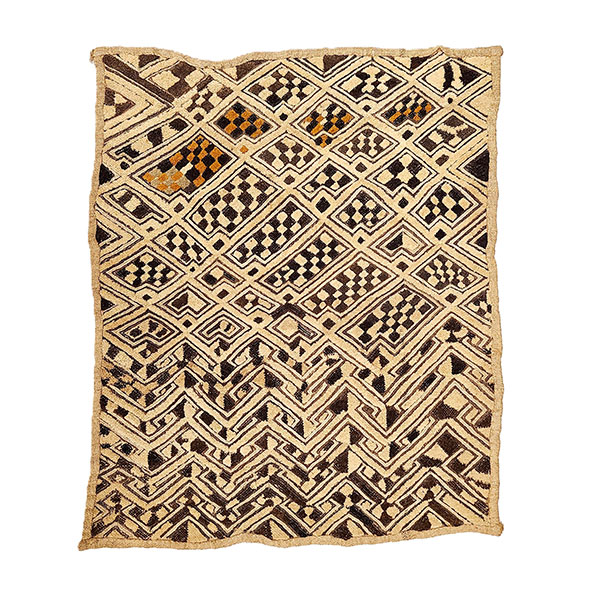Shoowa Prestige Cloth

Prestige cloths like this one are sometimes referred to as Shoowa cloths, after the Shoowa people who make them. The Shoowa are part of the Kuba Kingdom and live primarily south of the Sankuru River in the Democratic Republic of the Congo.
Shoowa prestige cloths are prized because of the skill, technique, and time that goes into making them. The grass-like fibers of the raffia palm are used to create the threads of the base fabric. Men use a loom and a flat weave technique to create the fabric. The process is then turned over to women who color additional raffia threads with traditional vegetable dyes to create contrasting colors. They design the elaborate patterns and embroider the cloths using a cut-pile embroidery technique. They pass threads between the warp and weft of the tightly woven base fabric with a needle, without any visible stitches or knots. They then cut the ends and fray threads to create the velvet look for which the cloths are renowned. The process of creating one Shoowa prestige cloth can take from several months to more than a year.
A Shoowa prestige cloth is a symbol of wealth and status in the Kuba Kingdom. Historically, they were used as units of currency, dowry payments, and in settlement of tax liabilities. The panels are displayed during ceremonies to indicate prestige and can be sewn together into clothing worn by high-ranking individuals on such occasions. They are also used as funeral shrouds to reflect the wealth and status of the deceased and their family.
The Kuba Kingdom was isolated from foreigners until the late 19th century. However, once their arts, including Shoowa prestige cloths, were introduced to people outside of Africa, they became immensely popular. Their designs have been appropriated by artists and design firms for nearly a century.
Other objects from the Kuba Kingdom that have been featured for Artifact of the Month include a thumb piano, hat, Katanga cross, divination object, and a mask.
